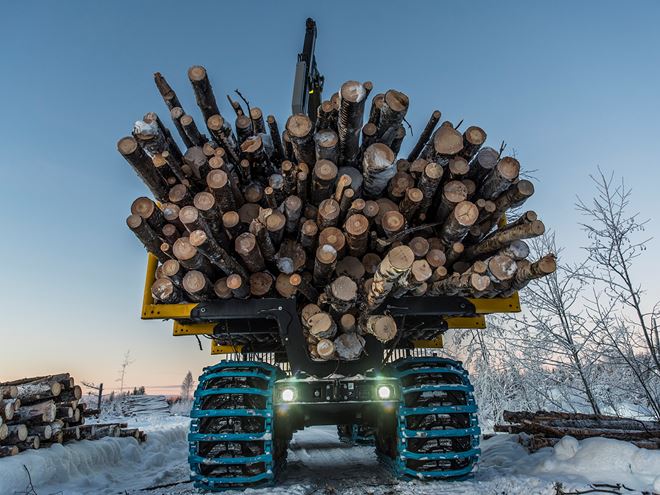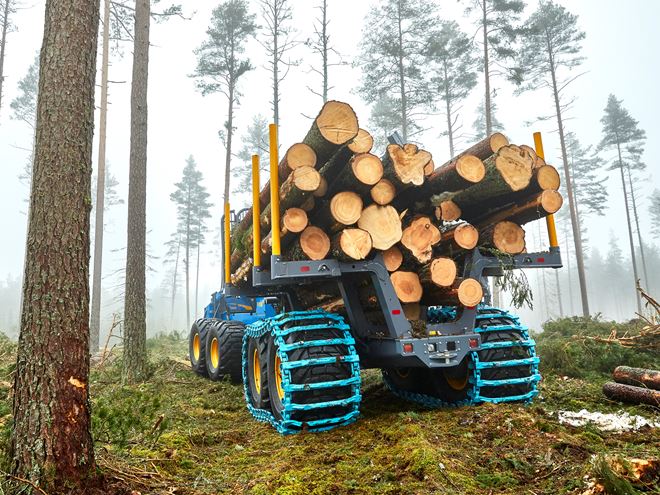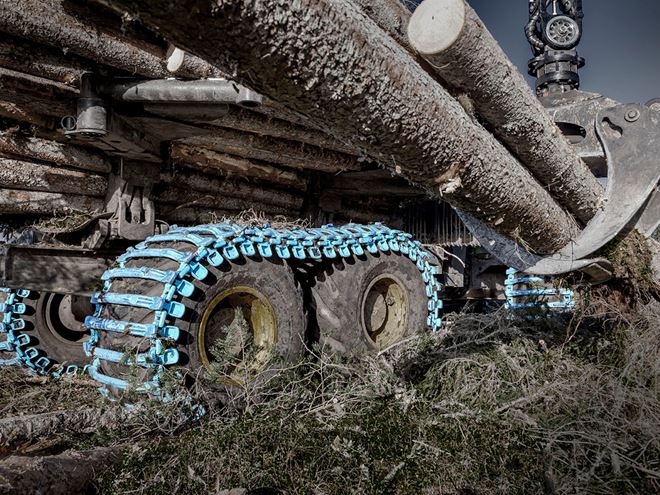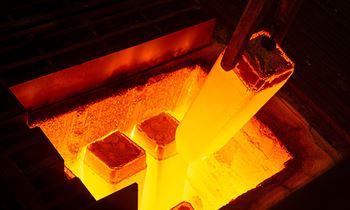Today’s forestry machine operators can command a premium for products with a low environmental footprint. According to consulting firm McKinsey, consumers in Europe and the US will pay at least five percent more for green buildings, furniture and packaging. Meanwhile, the industry is under pressure to report and improve its performance as environmental legislation becomes tighter.
However, accurate reporting requires a detailed understanding of the industry’s entire supply chain, which is why Olofsfors is currently working to certify the carbon footprint of its forestry machine tracks.
According to Göran Nyberg, board member and former CEO of Olofsfors: “Forestry machine tracks provide traction and flotation to improve the productivity of forestry machines. They need to be tough and durable to withstand rough forestry conditions.
“However, today’s forestry machine operators also want to have a minimal impact on our planet. Our customers are calling for us to help them quantify their environmental performance. To achieve this, we are currently working to publish the independently verified carbon footprint of our forestry machine tracks. In turn, our customers will be able to use this data to demonstrate their own environmental impact.”

Sustainability drive
Olofsfors is undertaking a long-term drive to improve its sustainability and limit CO2 emissions. It has already made excellent progress by sourcing low-carbon energy from Sweden’s run-of-river hydro resources to power its manufacturing facility. The company is also working with its steel supplier, Ovako, to further reduce its carbon footprint with steel that:
- provides a long and reliable service life
- saves energy by minimizing the number of production steps needed for manufacture
- can demonstrate a low carbon footprint, 80 % lower than the global average
- is delivered via sustainable transport.
Olofsfors sources steel from Ovako’s Smedjebacken and Boxholm sites in Sweden. These can supply various grades of boron and wear-resistant (WR) steel that have the ideal properties for sustainable forestry.
Tough and durable for forest operations
For any specialist equipment, the most important aspects of sustainable operation are long life and high reliability. These minimize operating costs and keep machines running 24/7 to avoid lost production.
When it comes to forestry machine tracks, boron steel grades provide the right combination of high strength, wear resistance, and ductility. The first two properties ensure that tracks are tough and long-lasting. The third, ductility, is a measure of how the steel can be drawn out without becoming brittle, which is extremely valuable for withstanding rough forestry conditions.
Optimizing production
Olofsfors also uses sophisticated methods to save energy and optimize production. The company’s engineers often call on the expertise of its supply chain at an early stage of its product design process. For instance, Olofsfors has worked closely with Ovako for years to source steel bars in special profiles that closely match the cross-sectional shape and size of its track components.

By doing this, Olofsfors can easily hot-form the bars to the right shape and carry out straightforward processing before final assembly and welding. This eliminates the need to buy and operate a forging machine or other high-cost production machines.
Mats Frangén, Olofsfors product development said: “By optimizing our designs to simplify manufacture, we have reduced the number of processing steps needed. Ovako’s rolling mill is fully equipped to supply the right grades of steel at the tolerances we need for our tracks. As a result, we can make significant savings in production and we pass those savings on to our customers.”
Responsibly manufactured steel
Another major factor in producing steel with a low carbon footprint is to base the production on recycled steel scrap and having efficient production processes. In addition, like Olofsfors, Ovako also uses a Nordic fossil-free electricity. Because of these factors, the carbon footprint of Ovako’s steel products is a full 80 percent lower than the global average, “cradle-to-gate”
Accounting for carbon emissions
Governments are applying pressure to forestry companies to minimize their environmental footprint. However, in order to calculate their own carbon footprint, they must consider the impact of all of the tools and resources they use. For forestry companies, this means gathering detailed information about the carbon dioxide equivalent for all the equipment, energy and fuel consumption that goes into production of their timber, pulp and paper.
In turn, this relies on manufacturers like Olofsfors and its supply chain to provide an accurate carbon footprint to account for everything from “cradle-to-gate”. This should cover sourcing and manufacture, transport and logistics of products and raw materials such as steel.
Steel is a highly readable material, in fact it can be recycled an infinitive number of time without losing it’s properties. It is important to know that there is huge variation in carbon footprint between different steel mills. For example, in 2019 Ovako published a Climate Declaration, part of the Environmental Product Declaration (EPD) system, for the same type of hot-rolled bar steel that Olofsfors orders from the Smedjebacken-Boxholm mills.

Under the EPD, the mills have been independently verified according to the ISO 14025 standard as producing steel with a carbon footprint of just 426 kg CO2 equivalent per tonne. This is less than one sixth of the global average and puts Ovako among the world’s most climate-smart steel producers. In 2019, Ovako also launched the Carbon Footprint Calculator, a tool that enable Ovako to provide their customers with the calculated Carbon Footprint figure for their steel purchase.
And because Olofsfors sources a significant proportion of the boron steel for its forestry machine tracks from these steel mills, the Climate Declaration translates into a significant advantage for forestry companies that want to operate sustainably. Having access to Ovako’s new Climate Declaration and the Carbon Footprint Calculator, means that Olofsfors is now equipped to calculate its own EPD for its forestry machine tracks.
Sustainable transport
Another tactic to minimize steel’s carbon footprint is to switch from road to rail freight transport. When transporting a bulk material such as steel from its production site to a single customer, rail is significantly more sustainable than road. According to campaign group Freight on Rail, rail transport produces 76 percent less carbon dioxide than the equivalent road journey.
In Sweden, the trains run on “green energy,” and according to freight company DB Schenker this results in total carbon reductions of at least 90% compared to alternatives. As a result, Olofsfors encourages suppliers such as Ovako to use rail transport wherever possible when transporting steel profiles over the 830 km from its rolling mill at Boxholm to Olofsfors in northern Sweden.
Read more about Olofsfors


